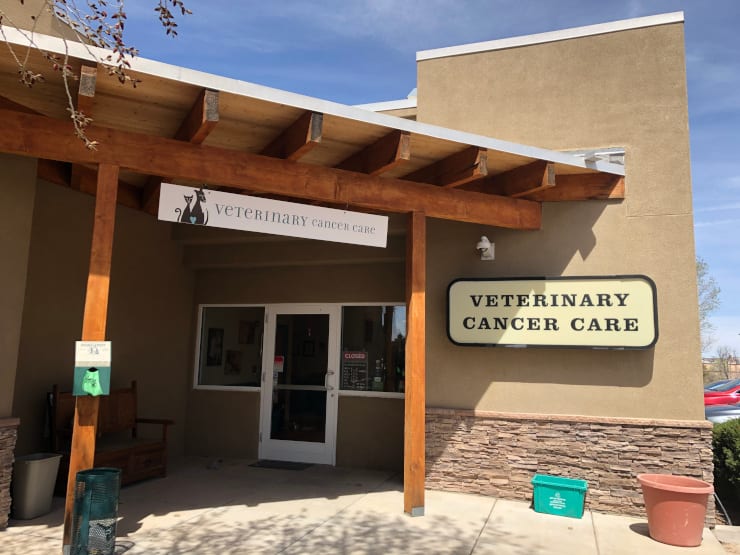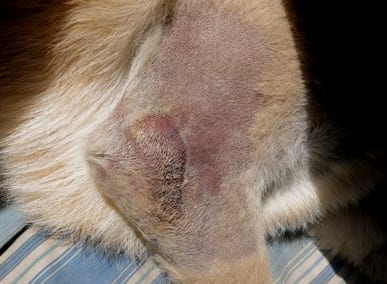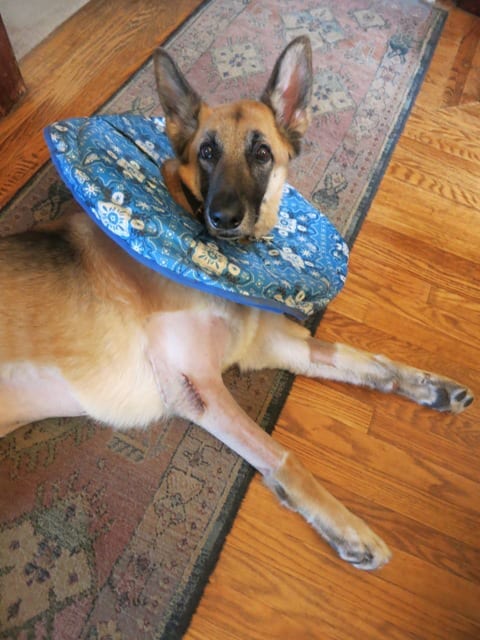Veterinary oncologists have many tools at their disposal, but some we don’t hear much about. Local intralesional chemotherapy treatment for pet cancer is one of them.

This relatively affordable treatment can mean the difference between life and death for a Tripawd who develops a tumor in a remaining limb. We think everyone should know about it. Our friend Jeannette M. Kelly, DVM Diplomate ACVIM, Oncology, founder of the Veterinary Cancer Care clinic in Santa Fe, New Mexico, explains in the last of our interview series with her.
Be sure to catch all of our recent video interviews with Dr. Kelly:
The Electrochemotherapy
Pet Cancer Treatment Option
and
Electrochemotherapy for Pet Cancer
Questions and Answers
and
Bisphosphonates Bone Cancer Treatment Update
All About Local Intralesional Chemotherapy for Pet Cancer
We first heard about Local Intralesional Chemo when Tripawds member Travis Ray was diagnosed with a soft-tissue sarcoma on a remaining limb. His parents did their research about how to treat any microscopic cancer cells left behind. They discovered local intralesional chemotherapy for pet cancer.

After discovering a local intralesional chemotherapy pet cancer study presented by Dr. Kelly at a veterinary conference, Travis’ parents worked with the University of California at Davis Veterinary Teaching Hospital to remove the tumor and treat the surrounding area with this form of chemo.
“A ‘middle of the road’ option to try and address the microscopic disease left behind is a treatment utilizing chemotherapy infusions in and around the scar. These would be performed under heavy sedation to ensure we keep Travis Ray as comfortable as possible and minimize exposure to the team doing the infusions.

This has not been officially published but was presented as an option a veterinary cancer conference. The median survival time reported with this treatment (meaning 50% of patients do better and 50% do worse) was >1,000 days.”
The procedure worked. Three years later, Travis is alive and thriving thanks to local intralesional chemo.

Here is Dr. Kelly explaining how this form of chemotherapy for pet cancer works:
Tripawd dogs and cats who develop a tumor on a remaining limb don’t have too many options. If you are faced with this heartbreaking situation and more common treatments like radiation therapy are beyond your budget, we encourage you to talk to your veterinary oncologist about this important tool in the fight to beat cancer.

Video Transcription
Title: What is Intralesional Chemotherapy
Dr. Kelly: You use a very small amount of chemotherapy and you actually inject directly into a tumor. Or you inject into a surgical site after the tumor has been removed. You’re actually under the skin.
So for a tumor in the skin, you (first) cut it out. There’s a surgery site. It’s healed. Then you inject chemo into that surgical bed, trying to clean up cells left behind. You get as much as you could and then you do radiation to clean up the cells.
The problem with the intralesional, is there are certain places you can’t get. Radiation can go to certain orifices and deeper penetrating and now radiation is sophisticated. But I will use ultrasound and I can inject a liver tumor directly.
I have a kitty cat that’s adorable. This cat – no exaggeration, (she had a) grapefruit, bigger than a grapefruit size, liver tumor. The cat comes in about every two months for a local chemo shot and cat is completely normal. I mean looks pregnant but eats, drinks, lives and maintains a completely normal life. So it’s palliative.
That’s just an example of how a local chemo shot can go a long way.
What kind of cancer is ideal for this treatment?
Tripawds: Is there an ideal tumor type for this?
Dr. Kelly: I’ve been treating all tumors. I think that tumors that are easier to get to with an injection. The objective is to get rid of pain, keep them comfortable and if we do get this really long stretch of time, then we will take it. Then the nice thing is we can do electrochemo in the future.
You can have problems. I think that since we are using it palliatively, I’m very minimalistic, I do less. I would rather leave a little tumor behind, so it doesn’t grow up into the sinuses and have a potential side effect. So I think that’s why our side effects are not very high.
Tripawds: How about ballpark estimates for the first treatment
Dr. Kelly: About a thousand. For electrochemo, it’s just – you’re using two chemo agents, cisplatin, bleomycin and then a quick anesthesia and – down and then up. But it’s outpatient. Clients will go get breakfast or go get a cup of coffee. So they’re not here. They’re down and they’re up and then they can go home.
Tripawds: For both types of procedures?
Dr. Kelly: Uh-huh, yeah, absolutely.
Tripawds: Can you combine these treatments with something like immunotherapy, like the new vaccines that are coming out?
Dr. Kelly: Correct, yes. I’ve always used the melanoma vaccine. There’s a melanoma vaccine and we use it in our practice and I feel like it really makes a difference. It’s part of our immunotherapy. We also use Immunocidin. It’s an immunomodulatory agent. It’s called mycobacterium cell wall synthesis.
[End of transcript]
Many thanks to Dr. Kelly and the terrific team at the Santa Fe Veterinary Cancer Care clinic for helping us share this information with you.
